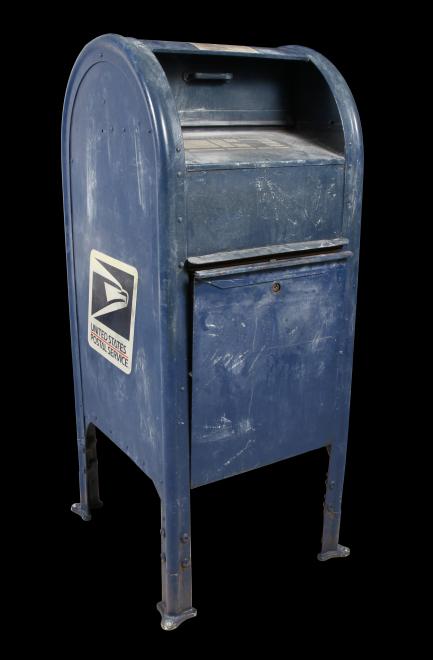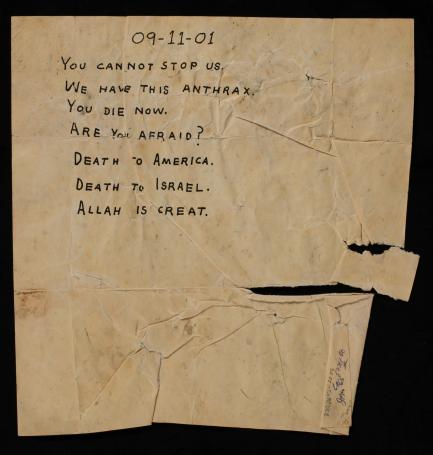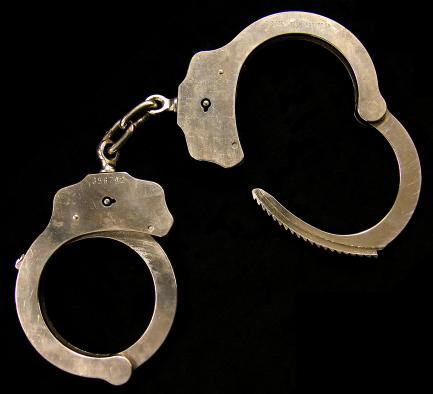National Postal Museum Opens “Behind the Badge” Exhibition
The “Behind the Badge” exhibition opened today at the Smithsonian’s National Postal Museum. It showcases the work of one of the nation’s oldest federal law-enforcement agencies. The U.S. Postal Inspection Service dates to 1776, when Benjamin Franklin first sent a surveyor to investigate the fledgling nation’s mail routes for efficiency and security. While post offices, postal employees and mail are common sights across the country, Americans may not realize that behind each is a network of U.S. postal inspectors working to keep the mail safe and empowering consumers to protect themselves and prevent crimes. A special online version of the exhibit is available on the museum’s website.
The exhibit offers visitors the opportunity to learn more about this little-known agency through some well-known cases that crossed their desks. Postal inspectors play a key role in restoring mail service and returning a sense of normalcy to communities shattered by natural and man-made disasters, from floods and wildfires to airplane crashes and terrorist attacks. Historic and contemporary cases that examine the wide range of work done by inspectors are interwoven throughout the exhibit.
The exhibit features many interactive opportunities, providing visitors numerous chances to try their hand at a variety of skills that are part of a postal inspector’s repertoire. These activities include spotting fraud and other mail scams, identifying crime suspects and analyzing crime scenes. Exhibit highlights include:
- Anthrax-laced letter addressed to Sen. Tom Daschle—On loan from the FBI is the threatening message that was mailed with anthrax to the office of Sen. Tom Daschle in 2001. The examination and decontamination processes left the letter and envelope nearly illegible.
- Handcuffs used during arrest of Unabomber Theodore J. Kaczynski—The handcuffs bound one of the nation’s most wanted criminals. They were snapped on Ted Kaczynski as he was brought out of his Montana hideout April 3, 1996. Kaczynski, better known as the Unabomber, had terrorized the nation since 1978 with a series of mail bombs sent to seemingly random individuals. The handcuffs were presented to postal inspector Anthony Muljat in recognition of his work on the case.
- Mail collection box from 2001 anthrax attacks—Only a month after the nation suffered the 9/11 attacks in 2001, it faced a new danger in the form of anthrax-laced letters mailed to members of Congress and the national media. Those letters were deposited in this Princeton, N.J., collection box. Visitors will notice that the box retains a dusty coating resulting from the decontamination process.
- “Help Keep the Mail Safe” is a multiuser touch table that challenges visitors to distinguish fraudulent or dangerous mail from safe pieces. These are items visitors could encounter at home or at the office. Which one should they open? And which one will empty their bank account? They decide.
- What does it take to be a postal inspector? A series of four mechanical interactive activities challenges visitors to use skills that postal inspectors use to solve and prevent crimes. Visitors can gather clues at a crime scene, match fingerprints, identify a suspect and even protect a major event venue by screening mail for explosive, biological, chemical and radiological agents.
- Personal narratives are the heart of “The Many Faces of Mail Safety” video, where postal inspectors, forensic analysts and postal police officers share their stories of life “behind the badge.” Four postal inspectors who worked headline investigations, such as the 1996 apprehension of Unabomber Kaczynski and the 2012 conviction of Allen Stanford for operating a $7 billion Ponzi scheme, tell their stories in audio stations in the exhibition.
- The “Recover, Restore, Reconnect” video explores how the U.S. Postal Inspection Service has responded to disasters in which the safety of postal workers and the security of the mail is at risk. Among the stories are those of inspectors who worked to recover mail from the 2013 crash site of UPS airplane in Birmingham, Ala., to restore mail service to Moore, Okla., residents following the 2013 tornado and partnered with the National Center for Missing and Exploited Children to reconnect families separated in the aftermath of Hurricane Katrina in 2005.
- The end of the exhibition hosts a fallen heroes memorial video that features biographies of the law-enforcement officers of the U.S. Postal Inspection Service who gave their lives in the line of duty.
The National Postal Museum is devoted to presenting the colorful and engaging history of the nation’s mail service and showcasing one of the largest and most comprehensive collections of stamps and philatelic material in the world. It is located at 2 Massachusetts Avenue N.E., Washington, D.C., across from Union Station. The museum is open daily from 10 a.m. to 5:30 p.m. (closed Dec. 25). For more information about the Smithsonian, call (202) 633-1000 or visit the museum website.
# # #
SI-335-2014
Marty Emery
202-431-8963
emerym@si.edu








